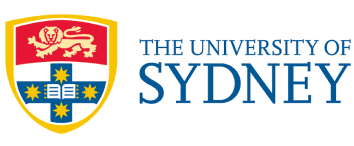Rare Australian plants with 'invisible' life stages evade detection
Wolly bluebush (Maireana lanosa) habitat flourishing.
News story
5 November 2024
Australia has long been celebrated as a land of ‘boom and bust’, of ‘droughts and flooding rains’; a harsh brown land that intermittently receives monsoonal rains, sending water gushing down usually parched riverbeds while the surrounding desert plains bloom with fragrant wildflowers and dancing seedheads. Booms and busts for some fauna species – plague locusts and long-haired rats, for example – are conspicuous and well-known. However, because they don’t form swarming clouds of biblical proportions decimating crops overnight or maraud over the plains voraciously consuming everything in their path including vegetation, electrical wiring and, ultimately, each other, we know very little about the individual plant species that drive Australia’s ‘booms’.
Biological rarity is typically considered as a spatial phenomenon based on range size, habitat specificity and abundance. Australia’s threatened flora lists are dominated by long-lived shrubs and trees with restricted habitats and distributions – known as ‘narrow range endemics’. However, in areas of unpredictable rainfall or sporadic disturbances, temporal rarity – where species can be abundant at certain times but rare or even absent for most of the time – is a key element to consider. Temporal rarity is poorly understood and adds another layer of complexity to assessing conservation status and managing threats.
Native clover claypan north of Ethabuka, Simpson Desert. Image: Jen Silcock
Foremost is the basic difficulty of locating these plants during surveys, when for most of the time they are not present or extremely rare in the above-ground vegetation. Locating them once is challenging; monitoring and discerning any trends is nearly impossible except on timescales of decades or even centuries. Because they are persisting in the seedbank, their ‘busts’ are not actually population crashes, but rather existence in a different (and invisible) life stage.
This life history strategy may confer some resilience to threats. These species germinate en masse in good seasons or after fire or other disturbance and set seed very quickly, often within weeks, before the hungry mouths of herbivores can consume them. They then lie dormant in the seed bank perhaps for decades, or persist in very low numbers or as dried out lifeless twigs… until a flood, fire or grader initiates a brief population boom. However, some have not been seen for years and there are substantial concerns for their persistence in vastly modified and degraded habitats.
Carpet of flowering daisies under gidgee (stinking wattle) in the Simpson Desert. Image: Jen Silcock
Here we consider some ‘ephemeral rarities’ from across Australia. Some are considered critically endangered, while the conservation status of others is uncertain. Some have not been seen for decades but assessing them as ‘presumed extinct’ is problematic, as the history of ‘rediscoveries’ shows. In reality, we can presume very little about these plants – all require further surveys and monitoring over long time frames to better understand their ecologies and management requirements, particularly in relation to disturbance. Many look ‘weedy’ and so would be overlooked – or perhaps even targeted for weed control – to the untrained eye. Others require periodic disturbance to germinate, but their habitats are now vulnerable to weed invasion following such disturbance.
The Eyebrights (Euphrasia species) are among the most enigmatic of Australia’s flora. They are cryptic, semi-parasitic herbs that grow sparsely in grasslands and grassy woodland. The critically endangered Euphrasia arguta was not collected for 100 years until its rediscovery in northern New South Wales in 2008, where it was growing profusely in regenerating firebreaks. It responds to disturbance and is probably naturally rare until such events. However, much of its habitat has been decimated for agriculture and urbanisation, and major threats remain including ongoing logging and weed invasion.

The rough eyebright (Euphrasia scabra). Image: Neville G Walsh, CC BY-NC-SA 4.0
The rough eyebright (Euphrasia scabra) is more widespread, recorded from grasslands across southern Australia, but a massive historical decline due to habitat loss and modification seems to be ongoing. It is difficult to discern trends due to population fluctuations, but some populations have apparently become extinct in recent years and others continue to decline even, mysteriously, in less modified areas.
The critically endangered Bredbo gentian (Gentiana bredboensis) is a short-lived herb known from a single population on private land. Monitoring since the 1960s shows fluctuations between 15 and 300 individuals. It grows in wet herbfield and requires direct sunlight and bare ground to flower and germinate; this habitat was probably kept open by native herbivores and fires but is now threatened by invasive grasses and shrubs. A wildfire burnt most of the site in 2020 and stimulated recruitment from soil-stored seed, but the species requires intensive monitoring and management to ensure its persistence.
Three species in the Gentian genus – Gentiana wingecarribiensis and G. baeuerlenii from New South Wales and G. clelandii from South Australia – have not been seen for at least 20 years and live in wetland habitats that have been highly modified. Further surveys are required, as it is possible that these species persist in the soil seedbank awaiting disturbance or certain seasonal conditions.
The aptly named elusive cress (Irenepharsus magicus) was located at the edge of a recently logged Victorian stringybark forest after fires in 2003. Nothing is known of its disturbance requirements or population trends, but it seems to be a post-fire pioneer species that lies dormant in the soil until conditions are right, when it emerges en masse.

Dainty bittercress (Cardamine tryssa). Image: Royal Tasmanian Botanical Gardens, CC BY-NC-SA 2.0
Also in the Brassicaceae family, the dainty bitter-cress (Cardamine tryssa) is known from wetlands on limestone in south-eastern Australia. There are few records in recent decades, and botanists have speculated that these enigmatic and elusive annuals may decline slowly over time as weeds, feral herbivores or changed disturbance regimes limit recruitment and the seedbank is progressively diminished. Recently discovered populations in Tasmania are from burnt areas and an old quarry, and provide the opportunity to better document and understand disturbance requirements and ecology of this species.
Heading north-west into drier country, Ptilotus brachyanthus is a small annual herb with creamy-white fluffy seedheads, known from a handful of collections in semi-arid western Queensland. It grows in mixed woodlands often on low sandy ridges that rise gently above vast grasslands. It was first collected in 1856 by Ferdinand von Mueller from ‘north-western Australia’, however has never since been recorded outside of Queensland. Most collections are over 70 years old, with extensive surveys in good seasons between 2009 and 2013 finding only three extant populations totalling 350 plants. The major threat to this species is invasion of its habitat by introduced buffel grass, however monitoring population trends is difficult. It can disappear from a site for many years: one population on Idalia National Park was monitored over a decade but was only observed on one occasion. There are other Ptilotus species in eastern Australia that have not been seen for decades despite surveys, and it is likely that they display similar life histories.
Floating leaves of Goodenia nocoleche. Image: Gavin Phillips
Goodenia nocoleche is perhaps the most enigmatic of all. A floating aquatic herb from the muddy ephemeral swamps and lakes of the Paroo and Bulloo catchments in western New South Wales and Queensland, it has only been seen in the wild at two locations. It was described from material grown from sediments collected as part of a seed bank study in 1997; the majority of records are from such seed banks. Seeds persist in these baking, dry clay soils until rains and floods fill the swamps, and the species briefly thrives – usually when it is too wet for botanists to access its muddy haunts. As such, almost nothing is known of its ecology, trends or actual distribution, while its habitat remains vulnerable to feral pigs.
We still know very little about some of Australia's rare plant species due to their enigmatic nature and ephemeral life histories. Because these species, such as Goodenia nocoleche, can exist in the seedbank without being visibly observed except once or twice - we may continue to know very little about these species that make up part of Australia's unique biodiversity. This underscores the importance of applying a precautionary approach to protect Country from threats like land clearing and invasive weeds and animals, to reduce the risk of adversely impacting 'hidden' species. We also need long term funding and programs that span decades (rather than election cycles) to research and monitor such species.
This article was written by Jennifer Silcock from the University of Queensland. Jen Silcock has spent the past twenty years in Australia's drylands, searching for rare plants, springs, insights into vegetation dynamics and grazing impacts, and obscure snippets of local history. Jen sits on the Queensland Species Technical Committee and the Steering Committee for the Queensland Threatened Plant Network, a partnership between the Queensland Department of Environment, Science and Innovation and the Australian Network for Plant Conservation.













